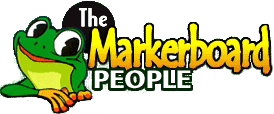Teaching Aids for Learning Styles
Learning is a complex process that involves not only receiving information but also processing and retaining it. Each individual has a unique way of learning that can be influenced by various factors such as personality, experience, and environment. One approach to understanding how people learn is through the use of a learning style inventory. In this blog post, we will discuss the different types of learning styles and the teaching aids that work best with each.
A learning style inventory is a questionnaire or assessment that helps individuals identify their preferred way of learning. There are several models of learning styles, but one of the most popular is the VARK model developed by Neil Fleming. According to this model, there are four primary types of learners: visual, auditory, reading/writing, and kinesthetic.

Supporting with visuals is a must in classroom settings. Visual learners prefer to learn through visual aids such as diagrams, charts, and videos. They have a strong ability to visualize information and tend to remember what they see better than what they hear. Teaching aids that work well with visual learners include whiteboards, slideshows, infographics, and videos. Teachers can also incorporate colors, pictures, and diagrams into their presentations to appeal to visual learners.

Auditory learners prefer to learn through listening and speaking. They have a strong ability to retain information through lectures, discussions, and verbal explanations. Teaching aids that work well with auditory learners include podcasts, audio recordings, class discussions, and lectures. Teachers can also incorporate music and sound effects into their lessons to appeal to auditory learners.

Reading/writing learners prefer to learn through reading and writing. They have a strong ability to absorb information through written materials and tend to remember what they read better than what they hear. Teaching aids that work well with reading/writing learners include textbooks, handouts, note-taking, and writing assignments. Teachers can also encourage reading and writing activities such as journaling, essay writing, and research projects.

Kinesthetic learners prefer to learn through physical activity and hands-on experience. They have a strong ability to learn by doing and tend to remember information better when they can apply it in real-life situations. Teaching aids that work well with kinesthetic learners include experiments, field trips, simulations, and role-playing activities. Teachers can also encourage movement and physical activity in the classroom, such as standing desks, group activities, and games.
In conclusion, understanding your preferred learning style can help you identify the teaching aids that work best for you. Teachers can also use this knowledge to create lessons that appeal to a variety of learning styles, making learning more engaging and effective for all students. By incorporating a range of teaching aids and activities, teachers can create a dynamic learning environment that caters to the diverse needs of their students.


